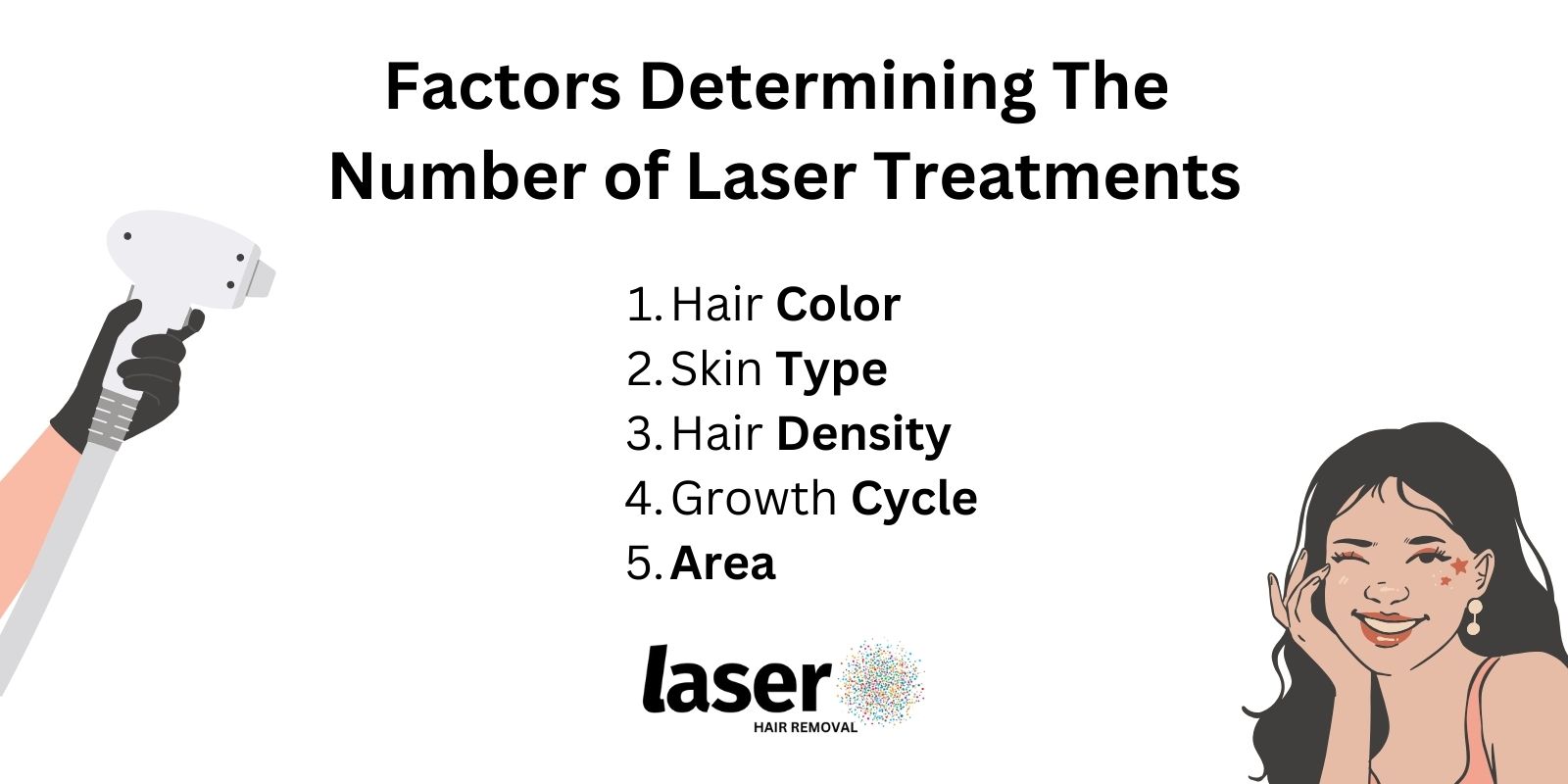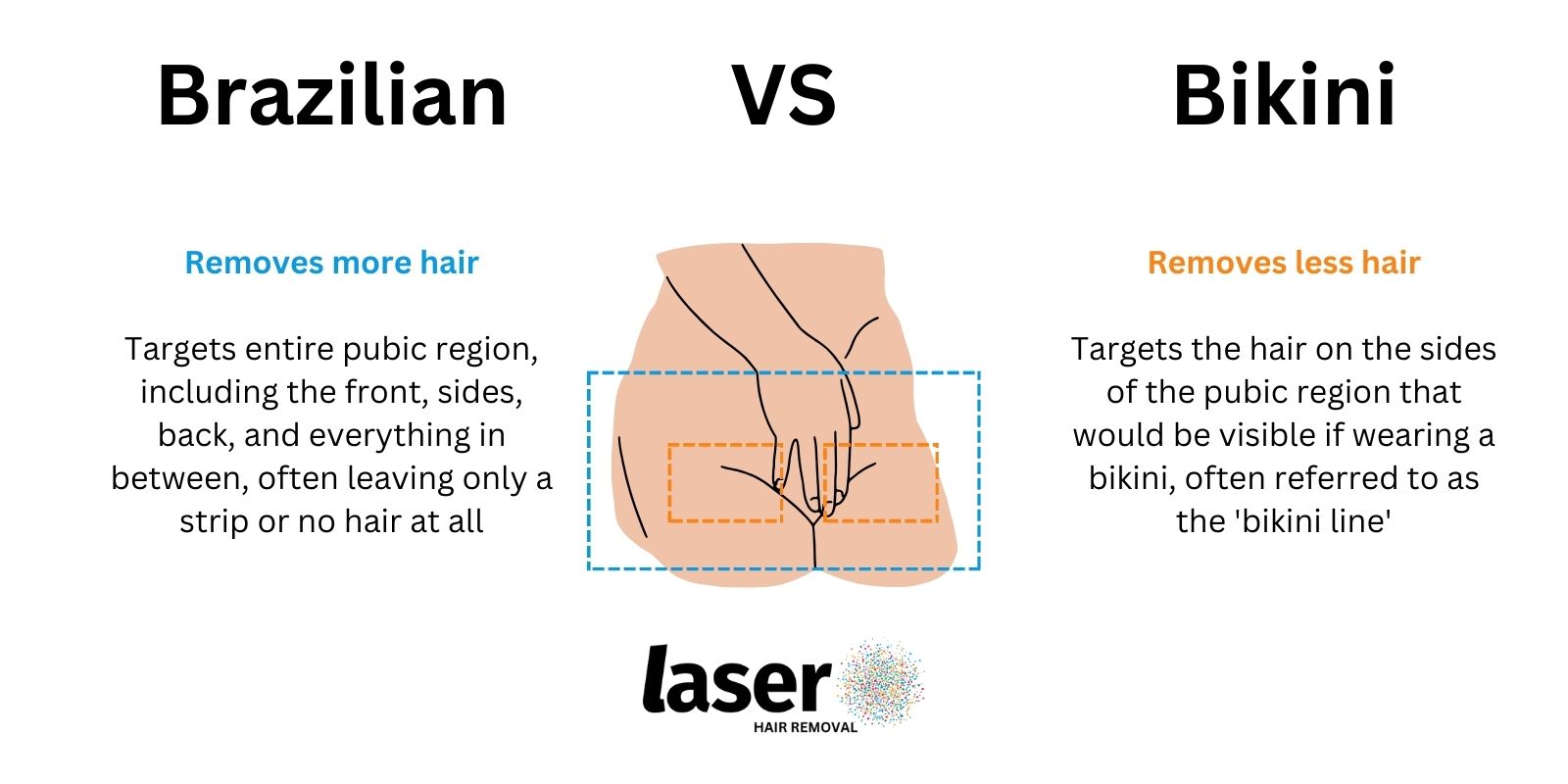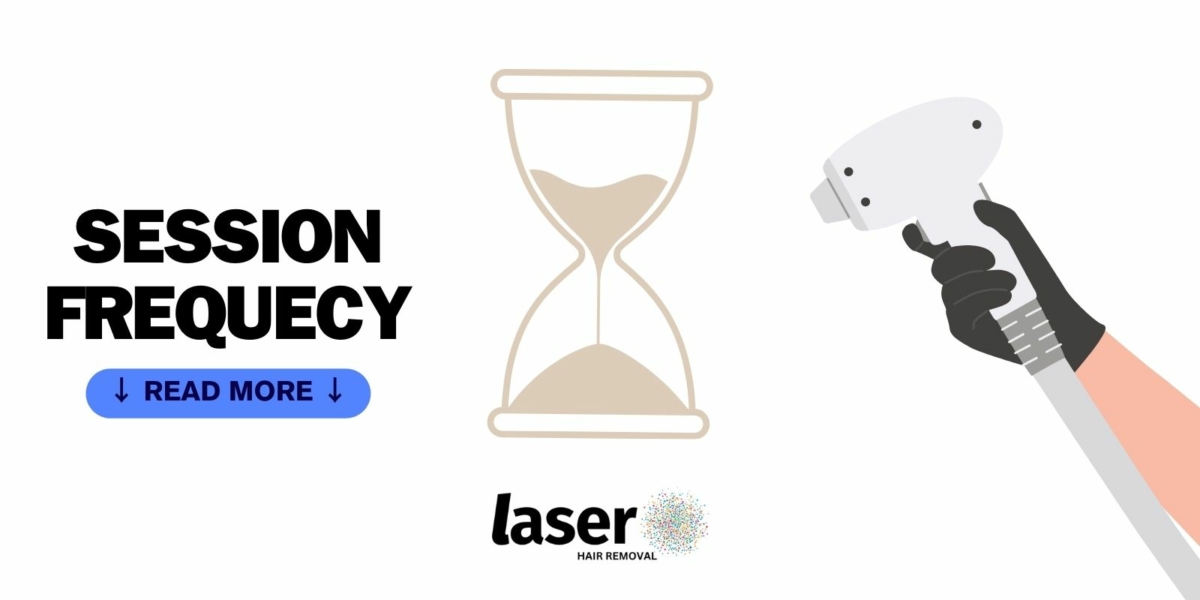Laser hair removal typically requires 2 to 8 sessions to achieve desired results. The number of sessions for laser hair removal varies depending on individual factors including hair color, skin type, and hair thickness. On average, clients may expect to undergo approximately two to eight sessions when targeting laser hair removal for areas such as the upper lip, underarms, or legs.
Use our laser hair removal session calculator to calculate how many sessions you need for laser hair removal based on: Hair color, skin type, hair thickness and treatment area:
What Factors Determine the Number of Sessions for Effective Laser Hair Removal?
The number of sessions required for effective laser hair removal varies due to several factors. Typically, individuals can expect to undergo an average of six to eight sessions, though this number can change based on specific determinants.
- Understand how hair color and pigment contrast significantly influence treatment effectiveness. Dark hair containing more melanin absorbs the laser light more easily, often resulting in fewer sessions needed compared to lighter hair.
- Acknowledge the role of skin type in determining laser hair removal efficiency. Those with a higher contrast between hair and skin color, such as dark hair on light skin, may require fewer sessions. Conversely, the latest technology can also effectively target dark hair on darker skin tones.
- Consider hair thickness and density, as coarser hair may absorb laser energy more readily, potentially reducing the number of sessions needed, while finer hair may demand more treatments.
- Examine the influence of the hair’s growth cycle on the session count. Only hair in the active growth phase, ‘anagen’, is affected by the laser, necessitating multiple sessions to target all hair as it enters this phase.
- Factor in the treated area‘s size and hair growth rate. Larger areas like legs or the back require more sessions than smaller areas such as the upper lip or underarms.

Additionally, individual response to treatment can cause variability in the number of needed sessions. To bridge these sessions effectively, it’s crucial to also consider how factors like hair color and skin type specifically affect laser hair removal sessions, potentially leading to a personalized treatment plan that aligns with one’s unique characteristics.
How Many Sessions for a Full Brazilian Laser Hair Removal?
A full Brazilian laser hair removal typically requires between 5 to 12 sessions for most individuals to achieve substantial hair reduction. This estimation, however, can vary based on personal characteristics like hair and skin type, as well as the laser technology employed.

What Is the Average Number of Laser Hair Removal Sessions for Underarms?
The average number of laser hair removal sessions required for underarms typically ranges between 4 to 6 sessions. This frequency ensures effective hair reduction, with each session universally spaced about 4 to 6 weeks apart to align with the hair growth cycle.
Legs Laser Hair Removal: How Many Treatments Should You Plan For?
For legs laser hair removal, typically, patients can expect to undergo about 2 to 8 sessions to achieve the desired level of hair reduction. However, this is an average estimate, and the exact number of treatments can vary based on several factors such as hair color, hair thickness, skin type, and the hair’s growth cycle. Here’s a breakdown of what contributes to the number of sessions required.
How Long Should You Wait Between Laser Hair Removal Sessions?
The interval between laser hair removal sessions typically ranges from 4 to 6 weeks for facial areas and 6 to 8 weeks for body areas. These time frames accommodate the hair growth cycle, specifically targeting the anagen phase when the hair is actively growing and most susceptible to the laser’s energy.
Costs and Considerations for Multiple Laser Hair Removal Sessions
The average cost of laser hair removal can range from $50 to $900 per session. Multiple sessions are generally necessary for optimal results, often tailored to individual requirements such as hair density and area size. Specific factors that influence the overall cost of laser hair removal include:
- Area of treatment: Large areas like legs or the back are more expensive than smaller areas such as the upper lip.
- Hair color and skin type: Hair removal is more complex for certain hair colors and skin types, possibly requiring additional sessions.
- Local market rates: Prices vary by region and the prevailing market conditions.
- Technological equipment used: Recent advancements like the Alexandrite laser might be more costly than older technologies.
- Provider expertise: Highly experienced practitioners may charge more for their services.
About Laserhairremovalo.com
Laserhairremovalo.com is an 100% independent laser hair removal comparison website. Laserhairremovalo.com provides unbiased information on laser hair removal devices and different laser hair removal salons. Laserhairremovalo’s data is sourced directly from client testimonials, Dermatologic Surgery, Dermatologic Clinics, the Journal of the American Academy of Dermatology, The Journal of Dermatology and Dermatologic Therapy.
About the Author
 This article was written by Timca Victoria, a laser hair removal expert aiming to help people remove unwanted body hair safely and cost-effectively. Facts have been checked by Fact Definition
This article was written by Timca Victoria, a laser hair removal expert aiming to help people remove unwanted body hair safely and cost-effectively. Facts have been checked by Fact Definition

